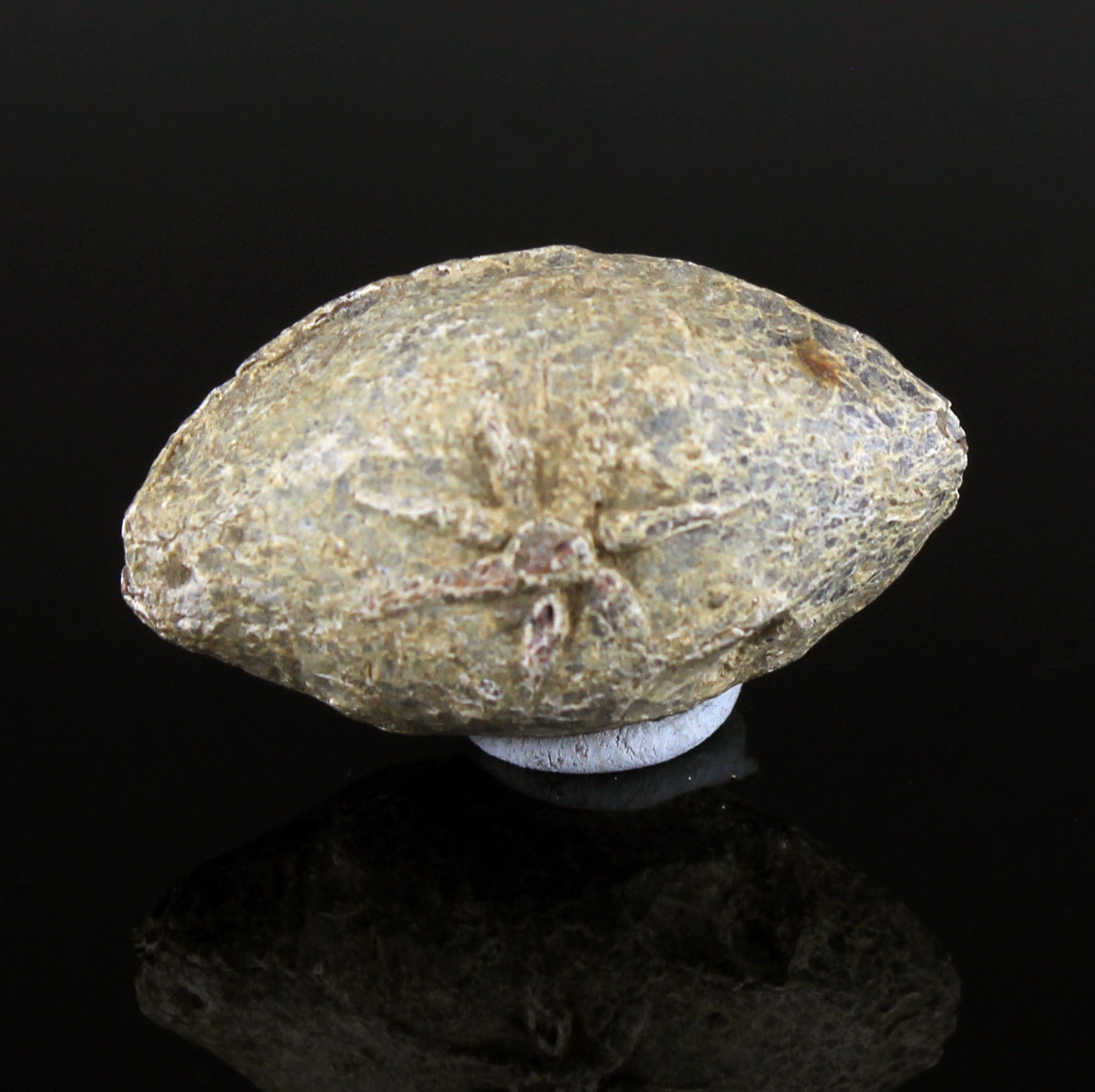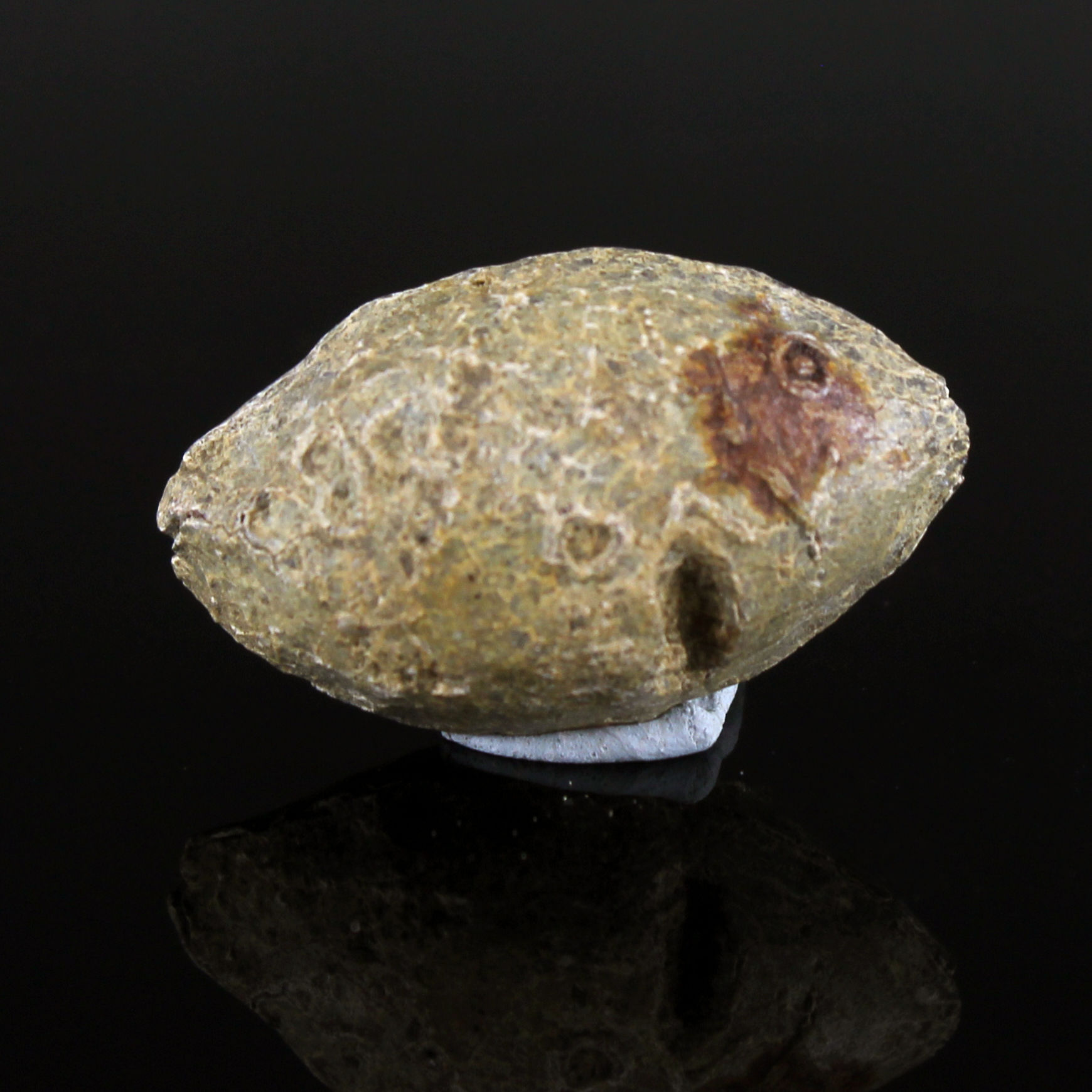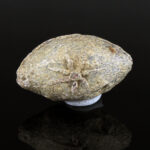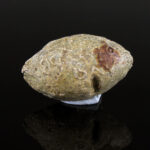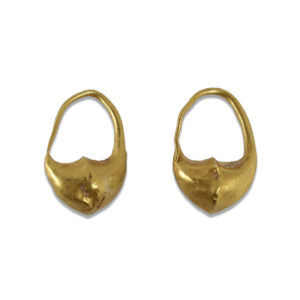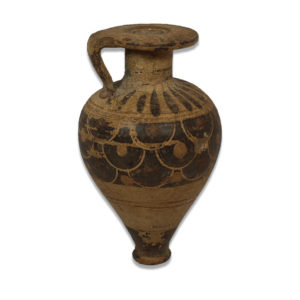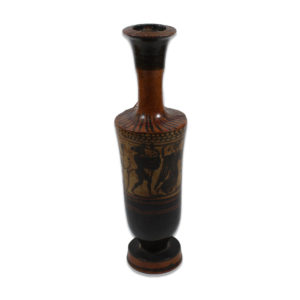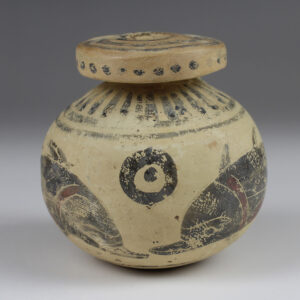Description
| ITEM | Slingshot with symbol eight-ray star and OAY |
| MATERIAL | Lead |
| CULTURE | Greek |
| PERIOD | 4th Century B.C |
| DIMENSIONS | 15 mm x 27 mm |
| CONDITION | Good condition |
| PROVENANCE | Ex Austrian private collection, acquired between 1970 – 1990 |
| PARALLEL | MANOV, M. & TORBOV, N., Inscribed Lead Sling Bullets with the Name of Alexander the Great and with Other Names and Symbols Found in Thrace, Archaeologia Bulgarica XX, 2 (2016), 29-43, P.38, Fig. 14 FREEMAN, P.W.M., POLLAND, A., Fields of Conflict: Progress and Prospect in Battlefield Archaeology, BAR International Series 958 (2001), p.14, Catalogue no. 2224 |
Sling, implement for propelling missiles, one of the first missile weapons used in warfare. It consisted of a small strap or socket of leather to which two cords were attached. The warrior, or slinger, held the ends of the cords in one hand, placed the missile snugly in the strap, and whirled the socket and missile rapidly around his head; by letting go of one cord at the right moment, the slinger could let the missile fly out of the socket at a high speed.
In the Roman army of the time of the Punic Wars (3rd–2nd century BC), the slingers were auxiliaries from Greece, Syria, and Africa. The Balearic islanders who constituted a part of Hannibal’s Carthaginian army fighting the Romans were renowned as slingers.


